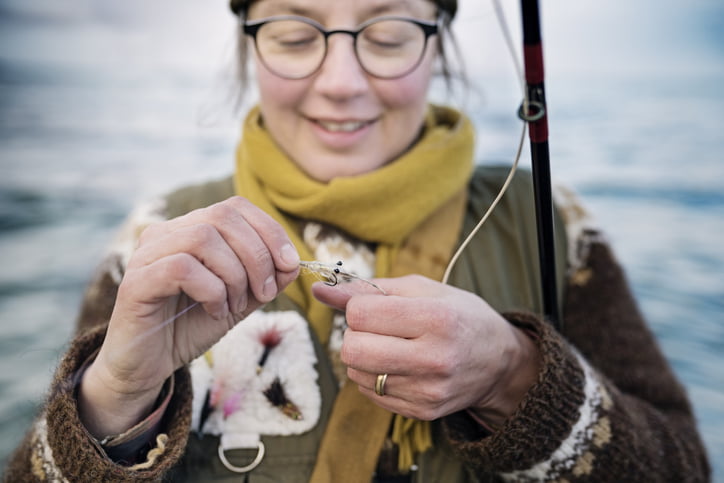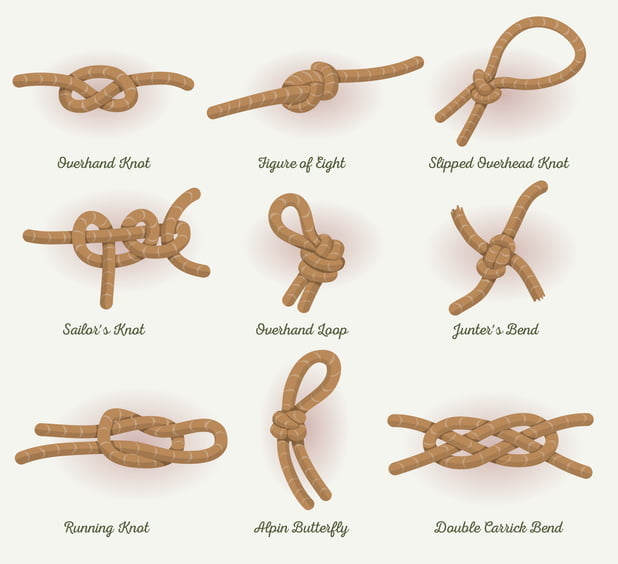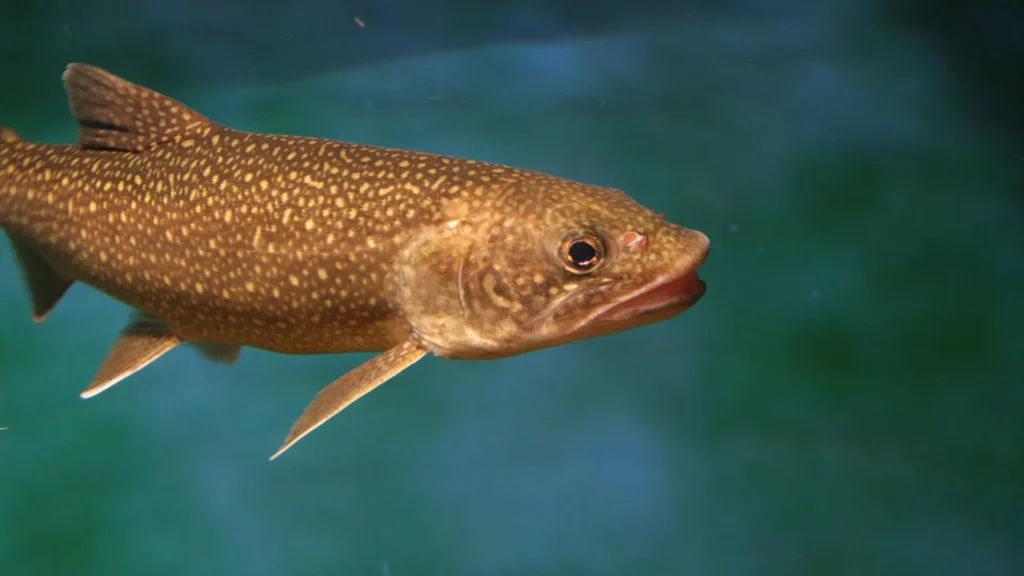Mastering essential fishing knots specifically designed for catfish is crucial for success. These knots are vital for securing your line and handling the strength of catfish, increasing your chances of landing trophy catches.
In this blog, we’ll be focusing on the essential fishing knots specifically designed for catfish enthusiasts. We understand that choosing the right knot can make a significant difference in landing that prized catfish. That’s why we’re here to provide you with detailed step-by-step instructions to ensure you can tie these knots with precision.
Upon completing this article, you will possess a thorough grasp of diverse fishing knots, arming you with the necessary expertise to effectively navigate any fishing scenario with poise.
Essential Catfish Fishing Knots
In this section, we’ll provide step-by-step instructions for each knot, discuss their applications in catfish fishing, and highlight their pros and cons. Additionally, we’ll share tips for maximizing knot strength and reliability.
1. Palomar Knot:
– To tie a Palomar knot, start by doubling the line and passing it through the eye of the hook.
– Now, tie an overhand knot with the doubled line, creating a loop.
– Pass the loop over the hook, ensuring the loop is large enough to accommodate the hook.
– Finally, tighten the knot by pulling both ends of the line.
The Palomar knot is a strong and versatile knot for catfish fishing. It is simple to tie and works well with different hook sizes and line types. The high knot strength ensures a secure hook. Although tying it in low-light conditions can be challenging due to the double line requirement.
2. Snell Knot:
– To tie a Snell knot, insert the line through the eye of the hook, ensuring it comes out the back.
– Take the tag end of the line and wrap it around the hook shank and standing line multiple times.
– Next, pass the tag end through the loop created above the hook eye.
– Hold the tag end and the standing line while pulling gently on the main line, gradually tightening the knot.
– Finally, trim any excess line.
The Snell knot is a popular choice for catfish fishing. It keeps the hook point facing upward for better hookset success and offers strong knot strength. This knot works best with circle hooks, but it may take practice to tie correctly.
3. Improved Clinch Knot:
– Begin by threading the line through the eye of the hook and doubling it back.
– Form a simple overhand knot with the doubled line, ensuring the loose tag end is long enough.
– Pass the loose tag end through the loop formed just above the eye of the hook.
– Now, moisten the knot and tighten it by pulling the standing line and tag end simultaneously.
– Finally, trim any excess line.
The versatile and popular Improved Clinch knot is ideal for catfish fishing. It provides strong knot strength and is easy to tie. Use this knot to secure hooks, lures, or swivels to your line. Take care with braided lines, as they may slip more easily than monofilament or fluorocarbon lines.
4. Uni Knot:
– Pass the line through the eye of the hook and double it back.
– Make a loop with the doubled line, creating a tag end.
– Begin by wrapping the tag end around the double line and through the loop. Repeat this process multiple times.
– Moisten the knot, then tighten it by pulling the standing line and the tag end simultaneously.
– Trim any excess line.
The Uni knot is a versatile and strong knot for catfish fishing. It works with different line types and is easy to tie, even with wet or cold hands. However, it may not be ideal for heavy lines or large hooks.
5. Double Uni Knot:
– Begin by overlapping the ends of two lines you wish to join.
– Tie a simple overhand knot, creating a loop with both lines.
– Pass the ends of each line through the loop twice, forming two loops each.
– Moisten the knot, then hold the ends of the lines and pull them in opposite directions to tighten the knot.
– Trim any excess line.
The Double Uni knot is great for joining lines, like mainline to leader or backing line to mainline. It’s strong and reliable, working with different line types. However, its larger profile can sometimes make it difficult to pass through guides smoothly.
6. FG Knot:
– Begin by doubling the line and wrapping it around one end of the braided line.
– Pass the doubled line through the loop created and repeat the process several times, forming a series of wraps.
– After making the desired number of wraps, pass the doubled line back through the loop and pull it tight.
– Now, repeat the wrapping process on the other end of the braided line.
– Finally, trim any excess line.
The FG knot is a reliable and strong knot for connecting braided lines to leaders. It moves smoothly through rod guides and offers great strength. While it may take practice and time to tie due to multiple wraps involved, it provides a secure connection that doesn’t slip.
To achieve maximum knot strength:
– Ensure the line is well moistened before tightening the knot, as this reduces friction and helps prevent the line from weakening.
– When tightening the knot, do so gradually and evenly to avoid stress concentration at a single point.
– Trim any excess line close to the knot, but be mindful not to cut the knot itself.
– Regularly inspect your knots, looking for any signs of wear or damage, and retie them if necessary.

Tips for Choosing The Appropriate Knot for Different Catfish Fishing Scenarios
Selecting the right fishing knot is crucial for targeting catfish in different scenarios. It can greatly impact your success and increase your chances of landing more catfish. Here are some tips for choosing the right knot in various situations.
1. Consider the fishing technique: Choose the right knot for your fishing technique. For live bait and stationary presentation, use a snell knot. For artificial lures, opt for a loop knot like the uni knot for natural movement.
2. Assess the line strength: Choose a knot that matches the line strength. Reliable options include the improved clinch knot and Palomar knot.
3. Consider the type of fishing line: Selecting the appropriate fishing knot depends on the type of fishing line. The FG knot is ideal for braided line due to its strength and sensitivity. For monofilament and fluorocarbon lines, the reliable options are the Uni knot and Trilene knot.
4. Evaluate the knot’s ease of tying: For beginners or fishing in low-light, choose knots that you can tie easily and quickly. The Uni and Palomar knots are both easy to tie and work well for catfish.
5. Test the knot’s strength and reliability: Before going catfish fishing, it’s essential to test the knots you’ll be using to ensure they’re secure enough to handle the fight with a big catfish.
Common Fishing Situations and Knot Recommendations
Regardless of whether you use braided line, monofilament line, or fluorocarbon line, a strong and dependable knot is necessary for securing your line to the leader or terminal tackle.
When using braided line, the uni knot is a top choice. It’s versatile and strong, allowing you to easily tie your line to the leader or hook eye. The uni knot’s simple design provides a secure connection, boosting your confidence in catfish fights.
When using monofilament line, the improved clinch knot is a popular choice. It securely grips the line, offering strong knot strength for battling big catfish. Plus, it’s easy to tie, providing peace of mind.
The palomar knot is highly recommended for anglers who use fluorocarbon line. It is strong, easy to tie, and maintains its strength even when wet, providing a reliable connection with terminal tackle.
For catfishing with circle hooks, choosing the right knot is essential to prevent hook slippage. The snell knot is specifically designed for circle hooks, providing ideal hook alignment and reliable hookups. Remember to tighten the knot properly for optimal performance.
Consider the variety of fishing situations you may encounter, as there is no universal knot that suits all. Take into account factors like line diameter, knot strength, and ease of tying when choosing the most suitable knot for the job.

Conclusion:
Selecting and tying the appropriate knots is absolutely crucial when it comes to achieving success in fishing endeavors. For catfish enthusiasts in particular, the importance of strong and dependable knots cannot be overstated. These knots serve as the foundation for ensuring that prized trophy catfish are securely landed.
What’s your go-to knot when it comes to catfishing? We’d love to hear about your favorite knot in the comments below. Join the conversation and let us know!
Additional Resources:
- 4 Fishing knots every catfish angler should know: https://www.catfishedge.com/fishing-knots-catfish/
- Key catfish knots: https://www.in-fisherman.com/editorial/key-catfish-knots/155628
- Best fishing knots and lures for all levels: https://www.takemefishing.org/how-to-fish/fishing-knots-and-rigs/lure-and-rig-fishing-knots/
- Fishing knots 101: Learn to tie these 5 essential knots: https://northernontario.travel/algoma-country/fishing-knots-101-learn-tie-these-5-essential-knots
How to tie fishing knots properly and securely: https://activeanglingnz.com/2014/05/09/how-to-tie-fishing-knots-properly-securely/


